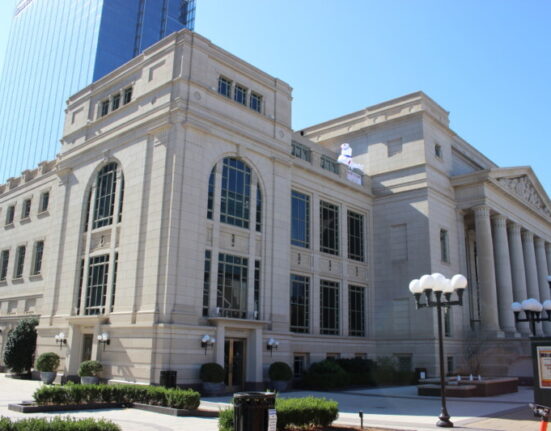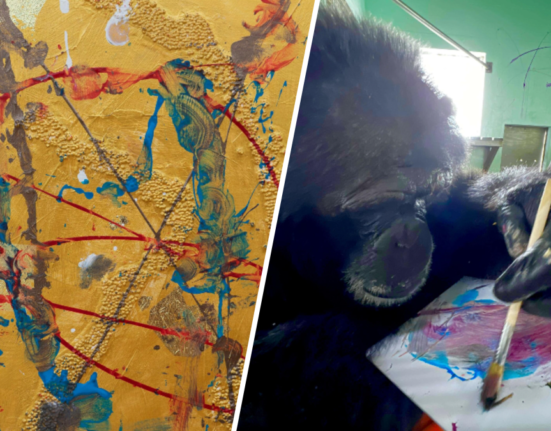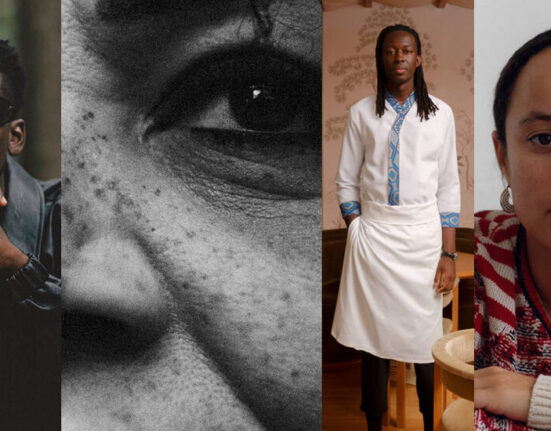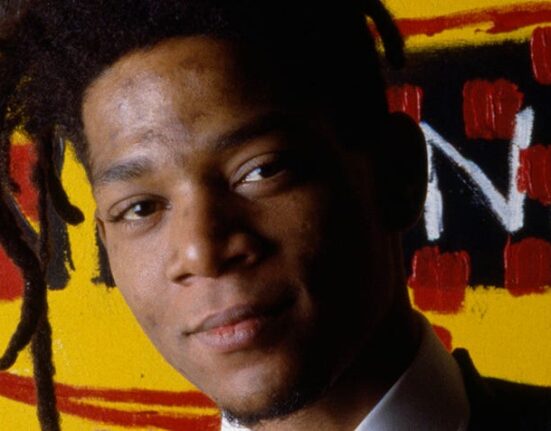There are few things on the planet as iconic as a Lego piece. Whether you grew up playing with them or not, it’s inarguable that Legos are omnipresent and have been since their Danish inception in the 1930s. Legos’ brilliance lies in their simplicity, yet they can be the building blocks of ideas and creations that are anything but.
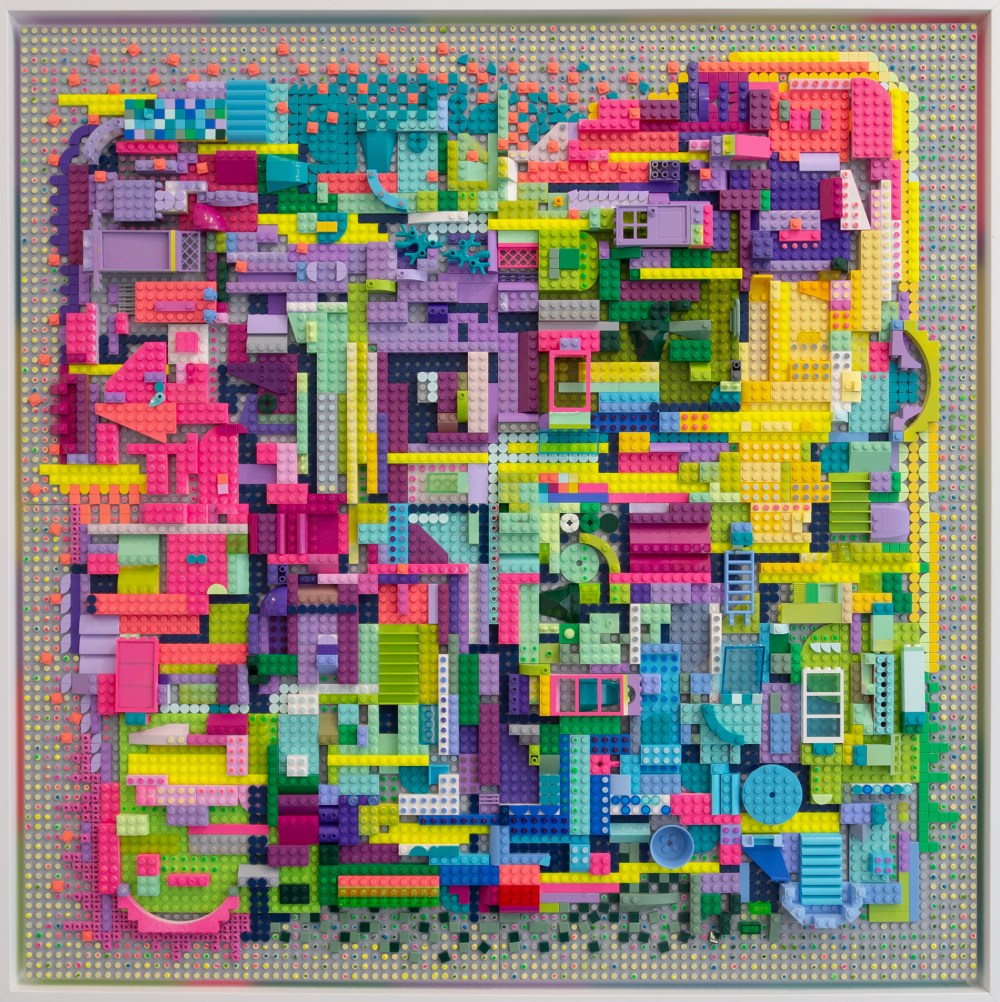
Vancouver-based multimedia artist Katherine Duclos has taken the creative potential of Legos to the extreme, first becoming familiar with the medium while playing with them with her three-year-old son. He was diagnosed as autistic, so Duclos served as his parallel play co-regulator, and Legos were often his toy of choice. Duclos’s fascination with Legos grew from there and has erupted into her creative practice of carefully crafting works of Lego art in eye-catching color palettes arranged in satisfying configurations.
Eager to learn more about her process and the journey behind her Lego art, I reached out to Duclos with a few questions that she’s answered below.
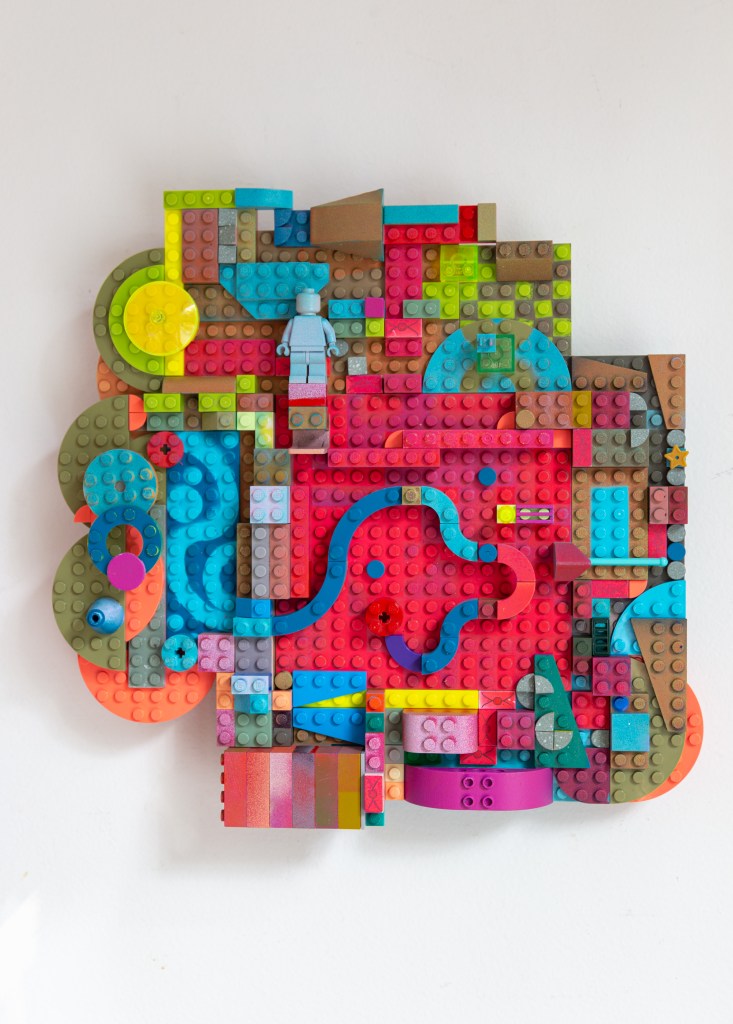
Why Legos? What is it about Lego pieces as a medium that speaks to you so much as an artist?
I love the immediacy of it. It’s satisfying to touch and is so direct. I started using Lego because it was my son’s special interest when he was three to six years old. All he wanted to do all the time was Lego, and he required a parallel play co-regulator with him at all times. “Mama, do you want to build with me?” was uttered so frequently every day, that I had to figure out a way to use Lego in a way I found satisfying too.
My son is a whiz at the sets; he’s seven now and about to finish the 6,000 piece Hogwarts castle he built all by himself. He’s been building sets that were above his age since he was three, so he’s quite gifted spatially. But I actually really struggle with the sets because my brain can’t process the diagram directions spatially, so I make a lot of mistakes and they take me a long time.
In order for me to enjoy Lego, I had to just start seeing it as a modular color material, not as a means of building three dimensional structures. Once I saw the potential as an abstract color process, I was right back to using color as a means of externalizing an internal order.
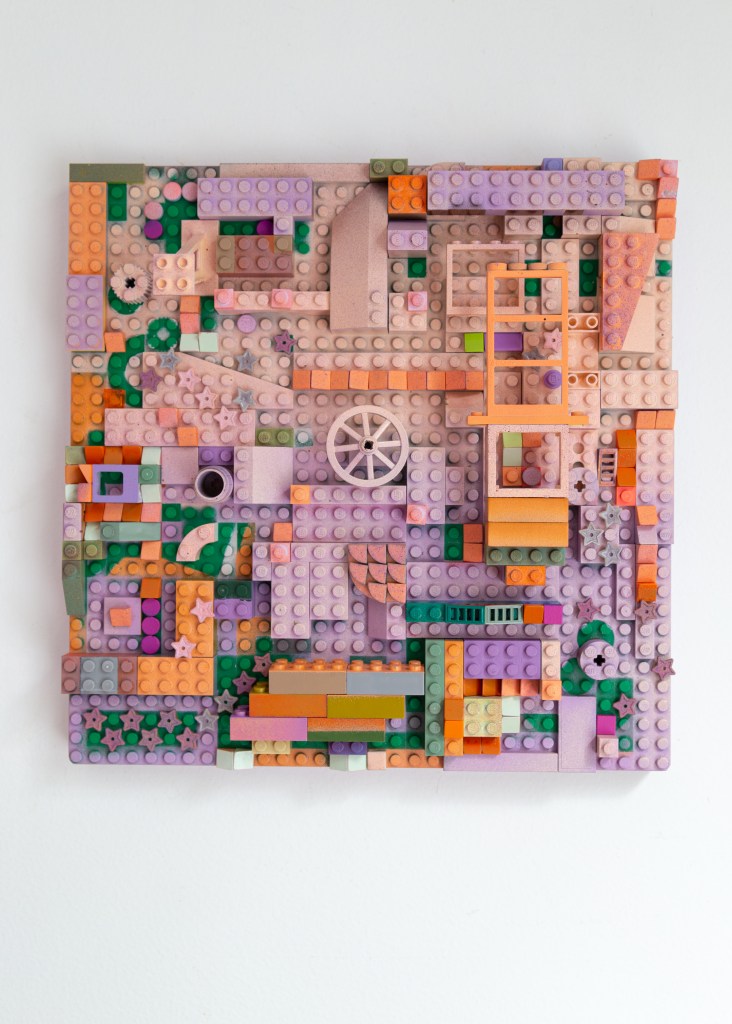
You say in your Instagram profile that you’re an “AuDHD artist.” Can you describe what that means exactly? How does this impact your artistic practice?
I discovered my Autistic-ADHD neurodivergence in my 40’s after both of my children were diagnosed autistic. It turns out apples don’t fall far from the tree, and we know a lot more about neurodivergent brains now than we did in the 80’s. When I was a kid, I would spend hours arranging colored wooden pattern blocks on our floors to create intricate mosaics that I wouldn’t let my mother clean up. I’m still putting color in order all these years later.
My need to jump around from material to material is a direct result of my ADHD and dopamine seeking, but it was almost what stopped me from being allowed to finish my thesis in grad school. Artists are often expected to develop a signature style or process they can be recognized by, but I never wanted to be limited. I can’t separate how or what I make from how my brain works now that I understand myself better.
Each brick I put down informs the next. There is always a rhythm that dictates where the colors get put in my work, but it’s internal.
Katherine Duclos
What’s your typical process for your Lego artworks? Do you use other materials at first to plot them out? Or do you start directly from the Legos themselves? How long does one piece typically take?
My process has changed since the early color constructions I made in 2021. Those were made as irregular shapes starting with small bases in a specific palette that were then paired with a colored paper background and framed. I usually start by selecting a color way for each piece— originally I just used Lego colors, but now I frequently paint them.
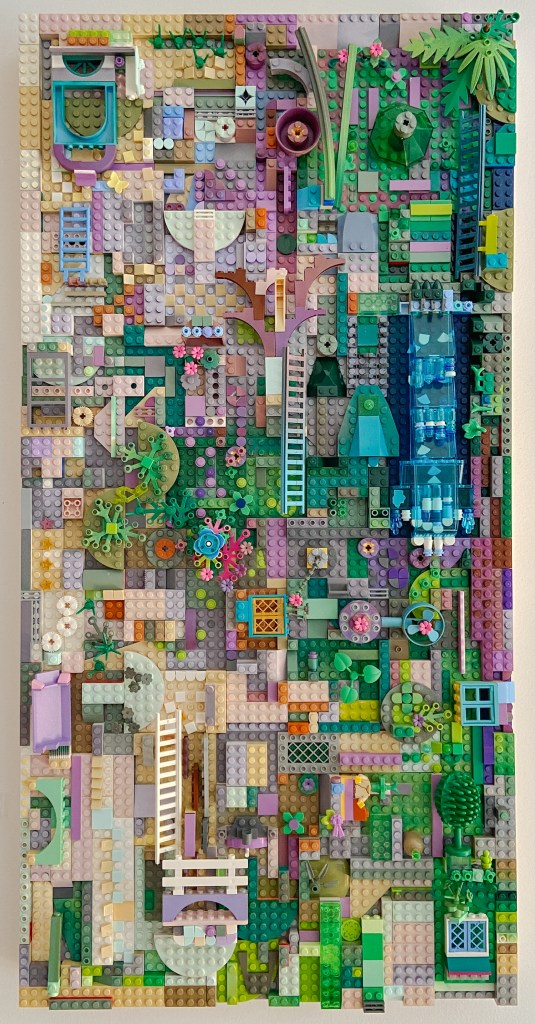
The first pieces were originally shown in a well-known coffee shop with an art program, attached to Emily Carr University (an art school here in Vancouver). Michael, the curator of the coffee shop (yeah, it had a curator), messaged me on Instagram and asked if I’d be interested in doing a show. We both thought the Lego work had some appeal and wanted to just have a fun show. I called it “Mama Do You Want to Build with Me?” and I think I made 24 pieces.
After that show, I started getting commission requests and had a few pieces go to galleries in the states, and one in a show with Studio Archive Project curated by Leslie Roberts. I started painting them for a solo show here in Vancouver at THIS Gallery in 2022. My latest group is a mix of heavily painted irregular constructions attached to wooden panels, as well as small sculptures and larger framed panels. Recently they went viral on Instagram, which has brought me a lot of attention.
Each piece varies in how long it takes me and I often do time lapse videos of the builds, as I find people like watching them. I never plan or plot them out, the same as all my work— it’s all instinctual responses in the moment. Each brick I put down informs the next. There is always a rhythm that dictates where the colors get put in my work, but it’s internal.
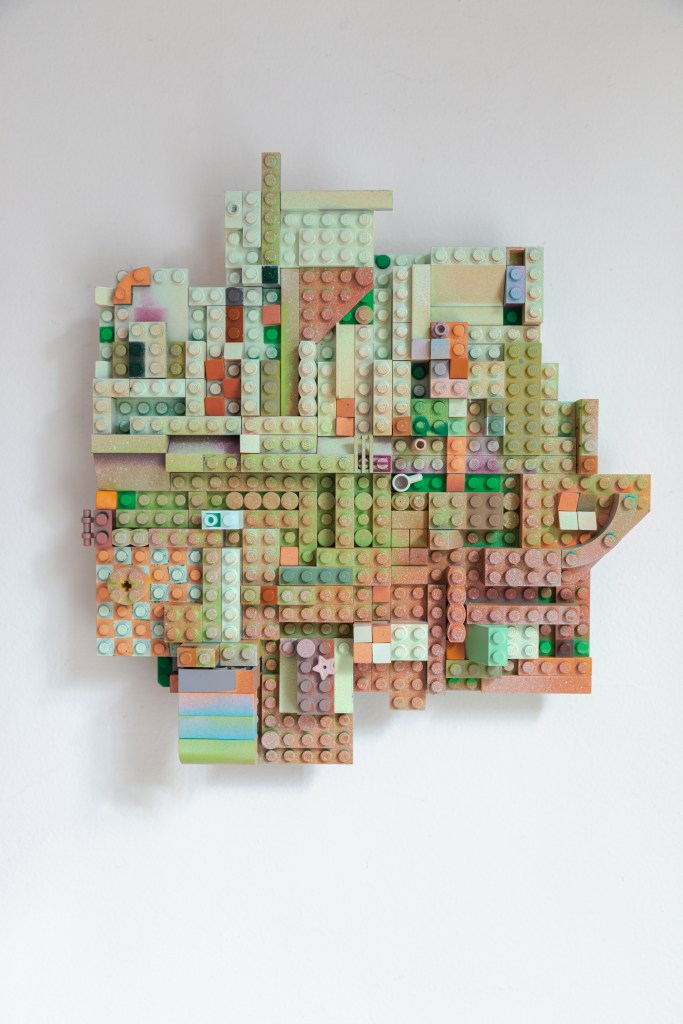
What’s your studio space set up like? I’m imagining mass amounts of bins and boxes filled with Lego pieces sorted by color!
I work at home, which is great for the Lego work because it’s enabled my kids to stay a large part of the process. I often buy large bulk collections of old Lego that I then spend weeks sorting, like 75 pounds of Lego at once. I have color-coded drawer bins along with bags of extra bricks sorted; so when my yellow bin gets low, I can pull from the reserve bags in storage.
I buy a fair amount of used bricks on Bricklink, a second-hand Lego marketplace. There are a lot of colors that Lego has retired—like my favorite Sand Red—and Bricklink is one of the only places to get them. I also frequent Lego stores and “Pick-a-Brick” walls.
There is Lego in every room of our house. My son has an uncanny ability to know where each piece came from and who it belongs to, so we keep them straight.
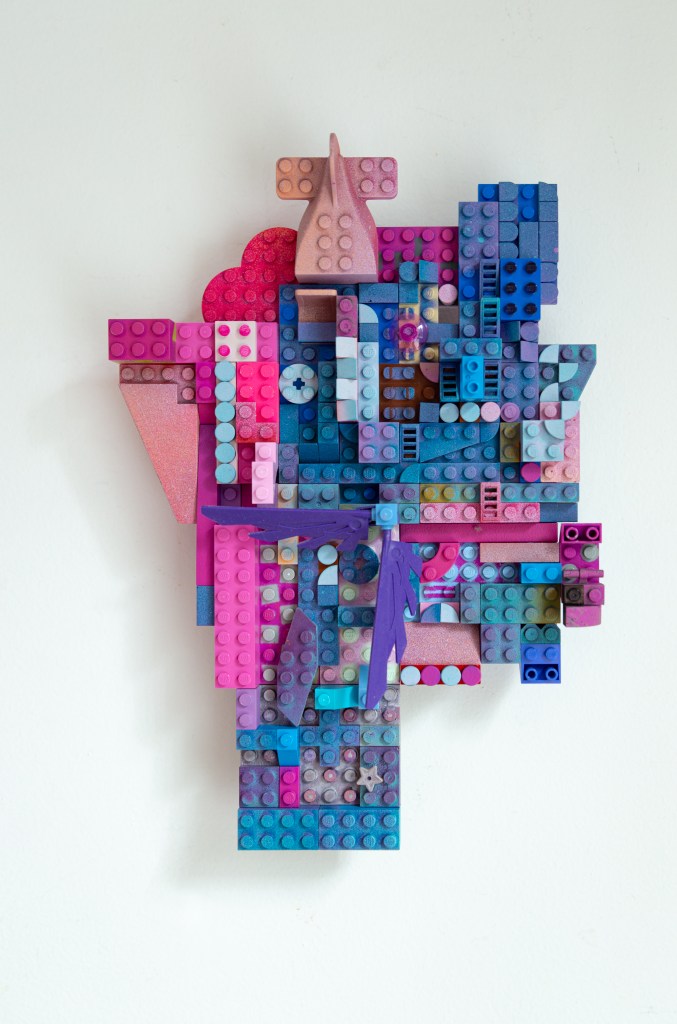
Has Lego the brand ever acknowledged your work in any way? Do you have any aspirations of doing a collaboration with them?
I heard from someone at Lego last week actually, with promises of further communication and possible collaboration so I’m hopeful. I’d love to design an abstract set for them.



